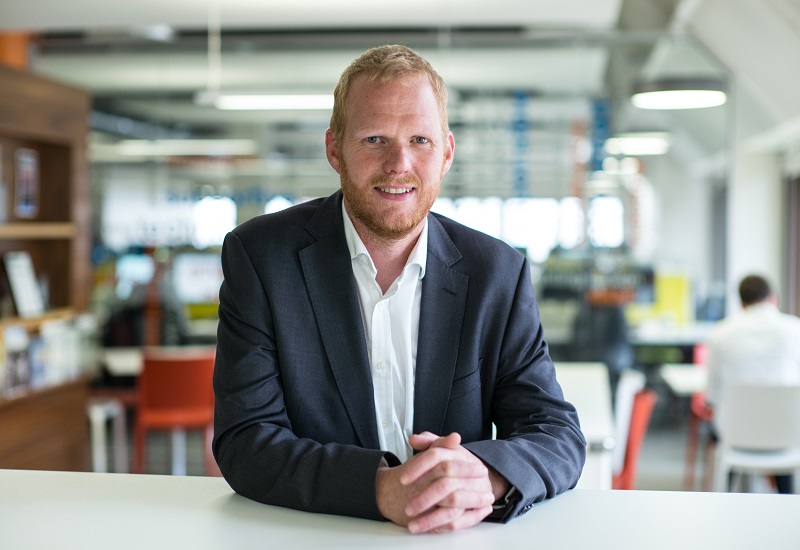What does the future hold? Rob Kennedy, Cundall
The food model of the Middle East is typecast by an aggressive climate and a rising population. In particular, GCC members have long been aware of the ever-rising demand for food, and investment into research and development of sustainable agricultural ventures have not been uncommon over recent years. Typically, however, the challenge to overpower a harsh natural environment proves less than fruitful, and so the burden of sustaining the masses becomes ever greater with time.
 As recently as 2014, the likes of Arabian Business have warned of a burgeoning annual food import demand of $53bn by 2020. Couple this with a fluctuating market, and the forecast presents the region with a problem that is fast approaching its own event horizon. The Middle East is already making strong commitments with waste to energy. Despite the considerable natural reserves to hand, the initiative to generate power from more sustainable sources is one which should be commended, however, as well as focussing on replacing what we already have, it would seem logical to consider introducing technologies that can provide us with what we dont currently possess. The potential for new technologies, such as methane-based protein production, should be something to consider as part of a wider, regional food security mandate.
As recently as 2014, the likes of Arabian Business have warned of a burgeoning annual food import demand of $53bn by 2020. Couple this with a fluctuating market, and the forecast presents the region with a problem that is fast approaching its own event horizon. The Middle East is already making strong commitments with waste to energy. Despite the considerable natural reserves to hand, the initiative to generate power from more sustainable sources is one which should be commended, however, as well as focussing on replacing what we already have, it would seem logical to consider introducing technologies that can provide us with what we dont currently possess. The potential for new technologies, such as methane-based protein production, should be something to consider as part of a wider, regional food security mandate.
For anyone new to this technology, edible protein is produced by forcing methane gas into water containing bacteria known as methanotrophs. These bacteria then consume the methane causing them to multiply and grow. Over time, the water content is reduced until the bacteria are all that remain, resulting in a biomass cake that can be made into pellets.
The end product contains over 70% protein and is used as a fishmeal substitute and additive to animal feeds. Having the ability to produce food from fuel is certainly an attractive concept and one which helps level the global playing field with regards the production of fish and livestock. The industry is already rolling out the product as fish and poultry feed, however, in time we may be able to see the benefits with larger livestock, which will reduce the need for fertile pastures and promote agriculture in regions which have historically been unviable.
Although processed feed has been around for many years, the benefit of having a product derived from methane opens up the possibility for local cultivation, which reduces the reliance on imports and promotes a more sustainable future. With a reduced need for imports and a reliable means of producing protein, the local market will be less exposed to rising prices and the relative impact of drought and failing crops globally.
It is not only in the end product where the benefits can be realised. The production process itself requires little in the way of water and land take up. Water, in particular, continues to be of great importance considering its scarcity, not only in the Middle East, but increasingly across the globe. Notwithstanding this however, the GCC states currently account for approximately 60% of the worlds desalinised water demand and this does not consider the additional abstraction from inland aquifers with finite reserves.
Adopting a commercial process that recycles water can be a significant advantage as this not only reduces demand, but also potentially alleviates the need for a piped supply which opens up greater flexibility for locating plants strategically. Although generally regarded as a new technology despite the concept first being explored in the mid- 20th century, the protein generated from methane gas is already approved by the EU for inclusion in animal feed.
Positive news for a food source which in time will be produced by harnessing methane as a waste product (the current technology runs on natural gas). Biotechnology company, Calysta, is one of the front runners in the technology and emphasise the point that usable methane is embedded in many of our waste streams such as wastewater, landfill, and manufacturing. With methane having the potential to be over 20 times more damaging than CO2 as a contributor to global warming, there is good cause to focus on using the waste product in a positive manner.
This is not to say that we should lower our commitment to reducing methane as a waste product in the first instance, moreover, we should consider the fact that new and emerging technologies are now showing us a potential solution for cleaning up the net residual emissions which are generated from what remains destined for landfill. Certainly, this is not the only answer to making use of waste methane.
For a long time, methane has been used as a fuel in the waste to energy industry, however it may be that through rethinking traditional ways of managing waste products, we can optimise the use to suit the regional demands of the GCC and take steps towards a more secure local food industry. The Middle East has become synonymous with future-focussed thinking for the masses, driven by the ideology of a sustainable economy unpegged from the oil and gas industry.
The implementation of a long-term food strategy plays a significant part in the relative success of these initiatives and we must consider the balance of traditional and emerging technologies for the benefit of delivering an optimised solution in a challenging environment.





